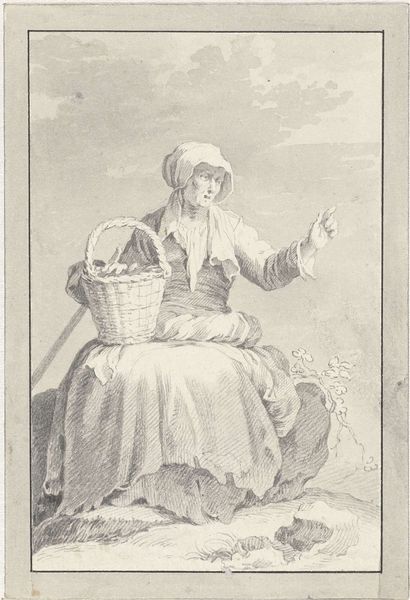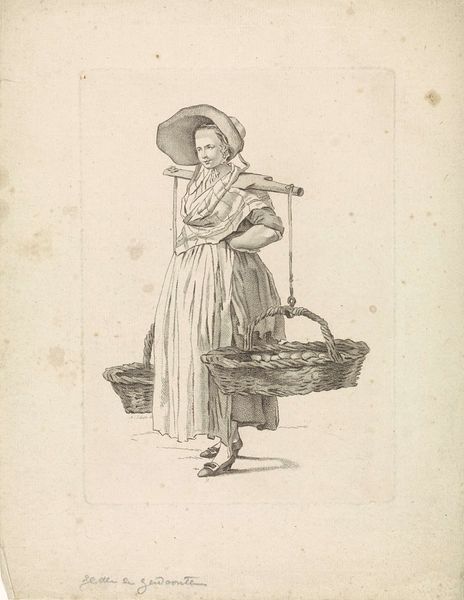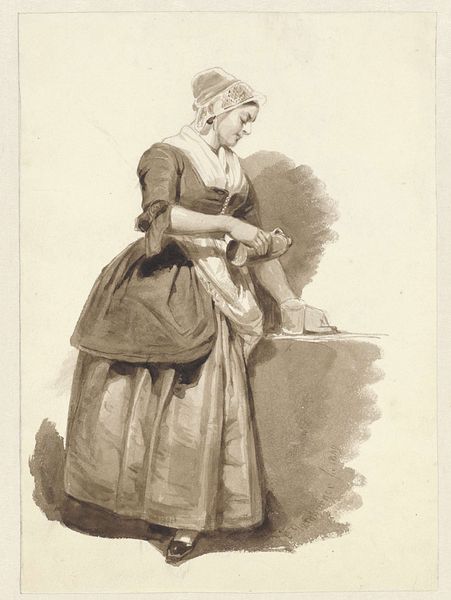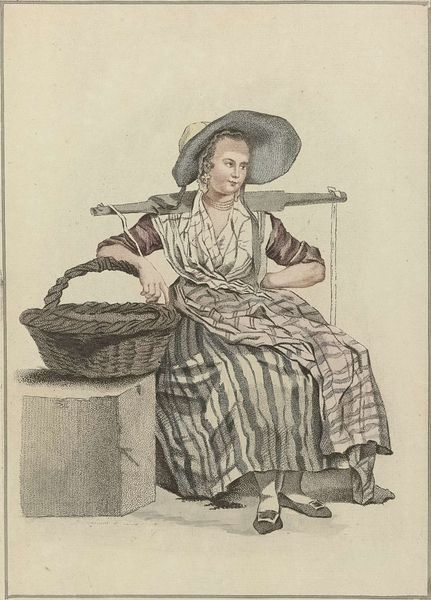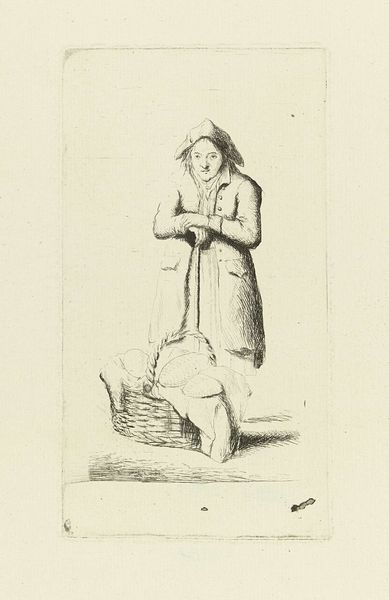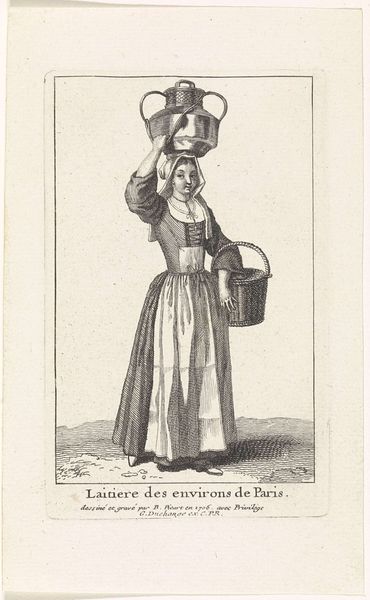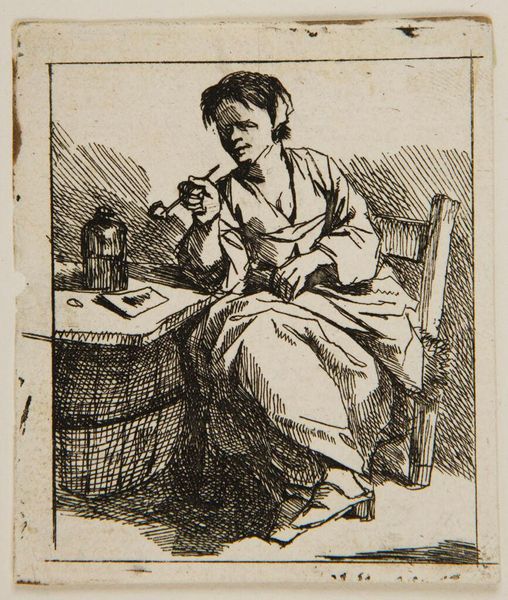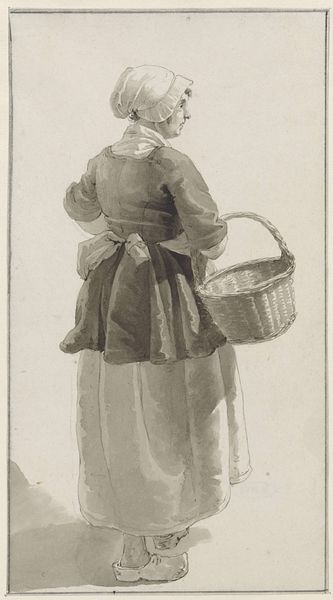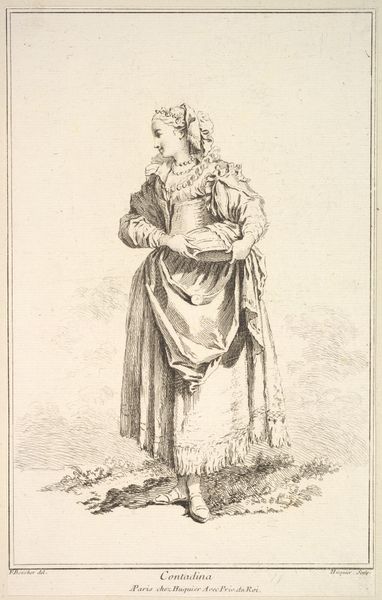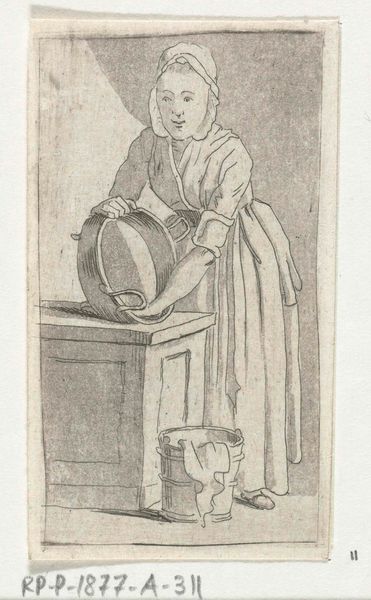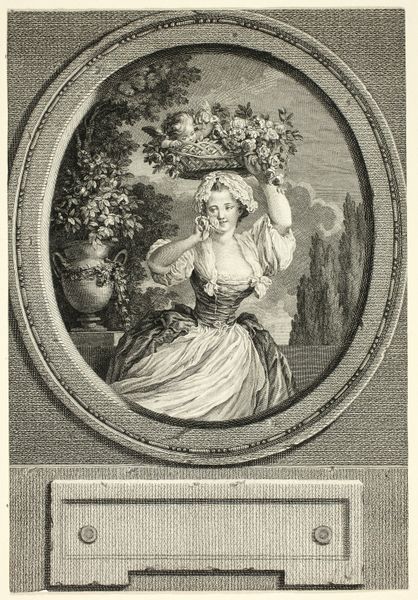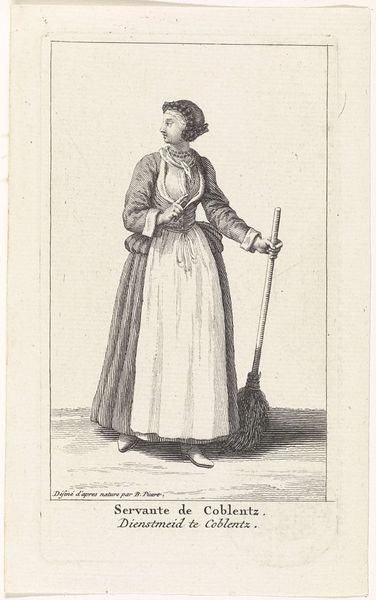
drawing, pencil
#
portrait
#
pencil drawn
#
drawing
#
pencil sketch
#
pencil drawing
#
pencil
#
line
#
portrait drawing
#
pencil work
#
genre-painting
#
realism
Dimensions: height 219 mm, width 150 mm
Copyright: Rijks Museum: Open Domain
Editor: So, this is "Visvrouw zittend bij een mand met paling," or "Fishmonger Sitting by a Basket of Eel," by Mathias de Sallieth, likely created between 1772 and 1833. It's a pencil drawing. I find the realism quite striking. How do you interpret this work? Curator: This drawing captures a moment, yes, but consider what eels represent in folklore – often associated with transformation, adaptability, and even the subconscious. What does it mean when we depict a woman directly engaged with that symbolic creature? The eels could signify something deeper about her life, her adaptability to a tough world, perhaps even a link to hidden knowledge. Do you see that reflected in her expression? Editor: I do see what you mean. Her gaze is pretty direct. Almost challenging. Curator: Precisely! It transcends a simple genre scene. Consider how, even with simple lines, de Sallieth gives her agency. The placement of the eel, almost guarded by her hands, suggests she's more than just a seller. The scene taps into a reservoir of cultural beliefs surrounding these creatures, echoing resilience and an intrinsic connection to the natural world. What remains are symbols about resilience and identity for marginalized members of society. What do you think she is conveying? Editor: Wow, I never considered that eels had so much cultural significance. Looking at the drawing again, it's more than just a woman selling fish; it's about survival, maybe even defiance. I really appreciate learning this context; it’s made me see the work in a completely different light. Curator: Exactly, and the memory lives on through the artist's hand.
Comments
No comments
Be the first to comment and join the conversation on the ultimate creative platform.
